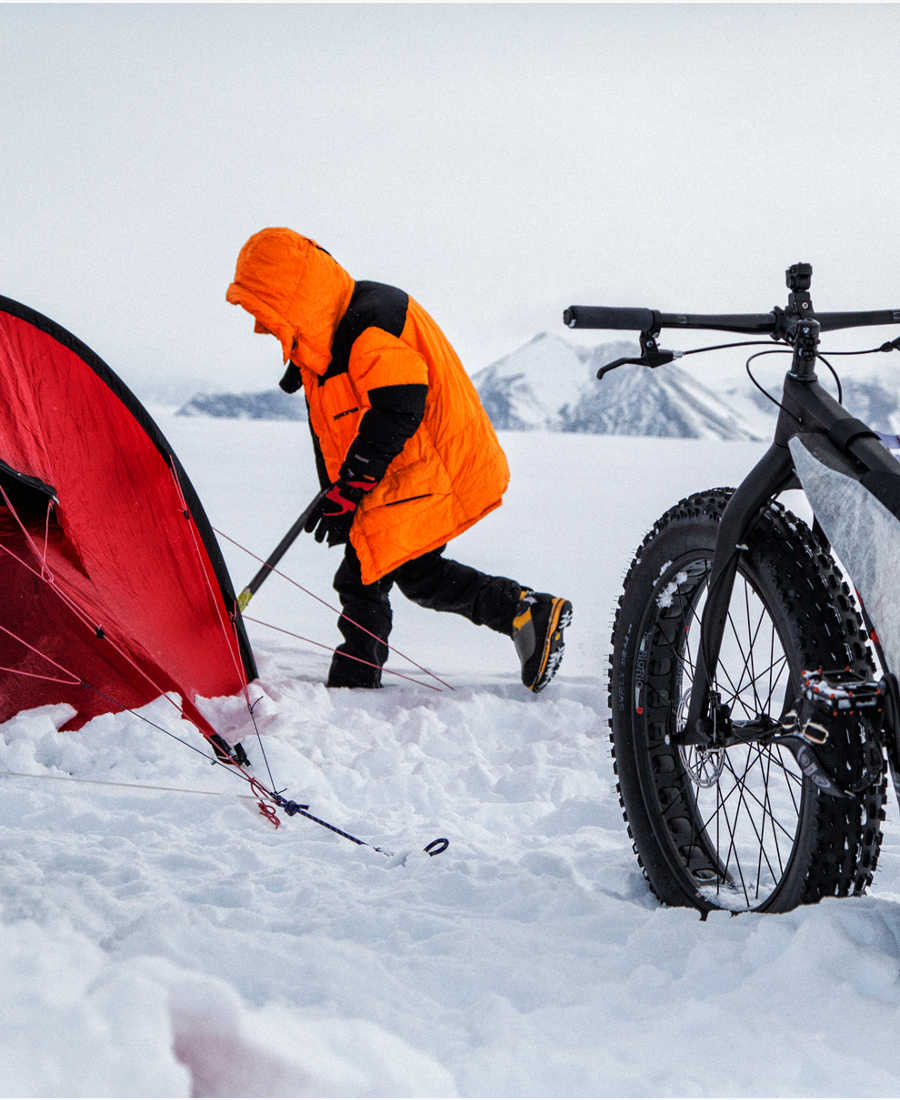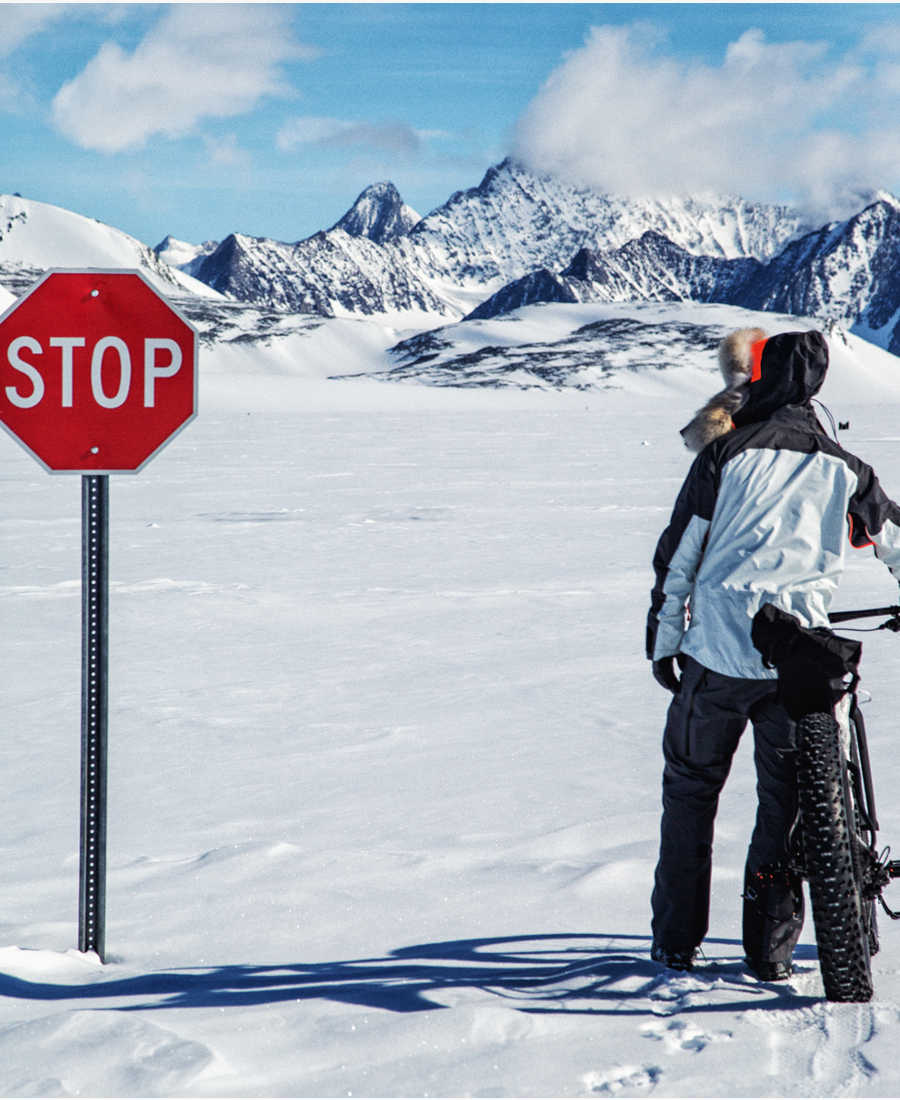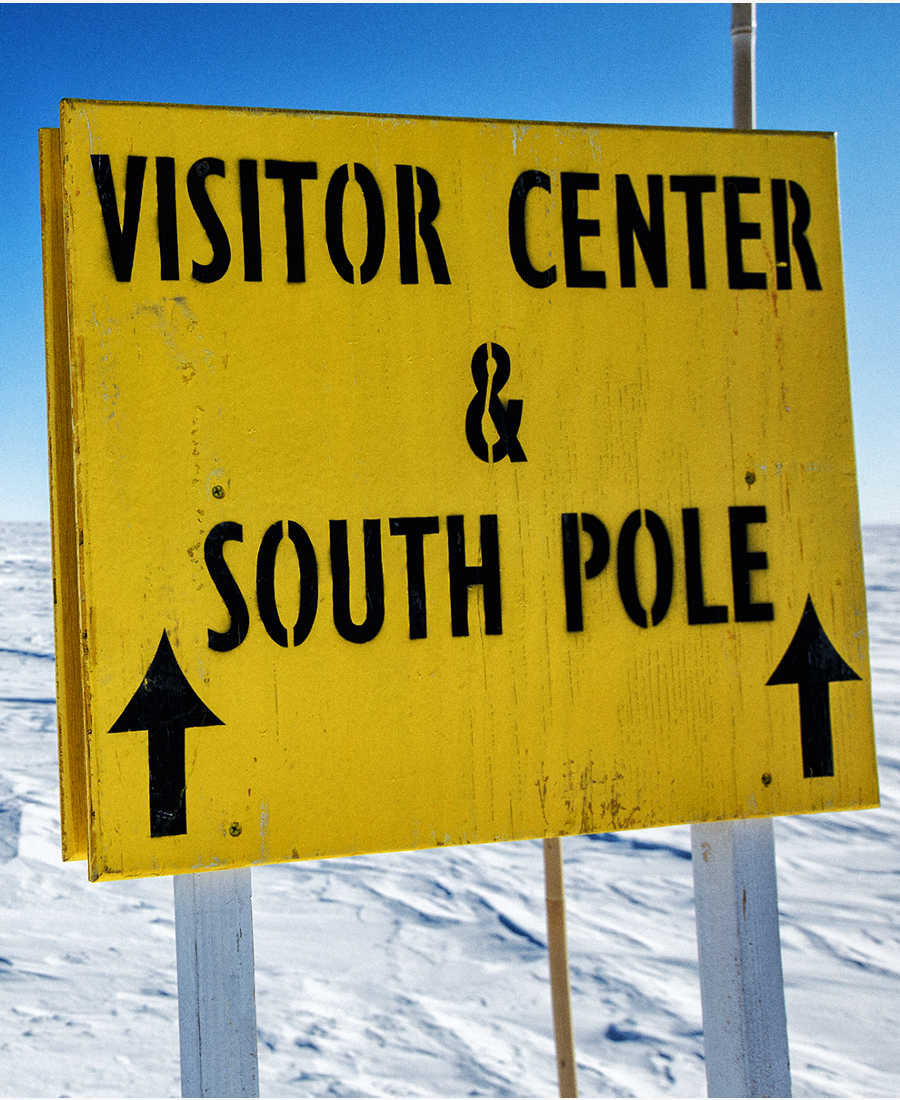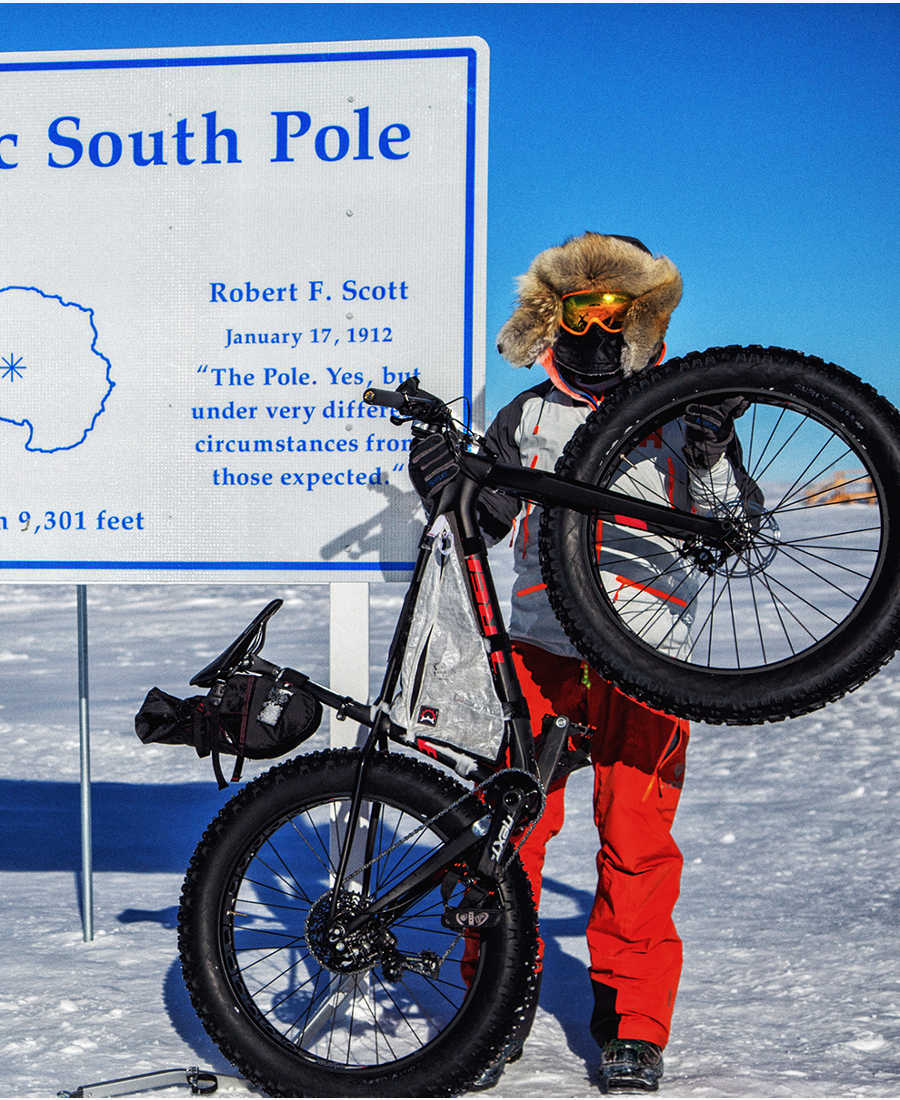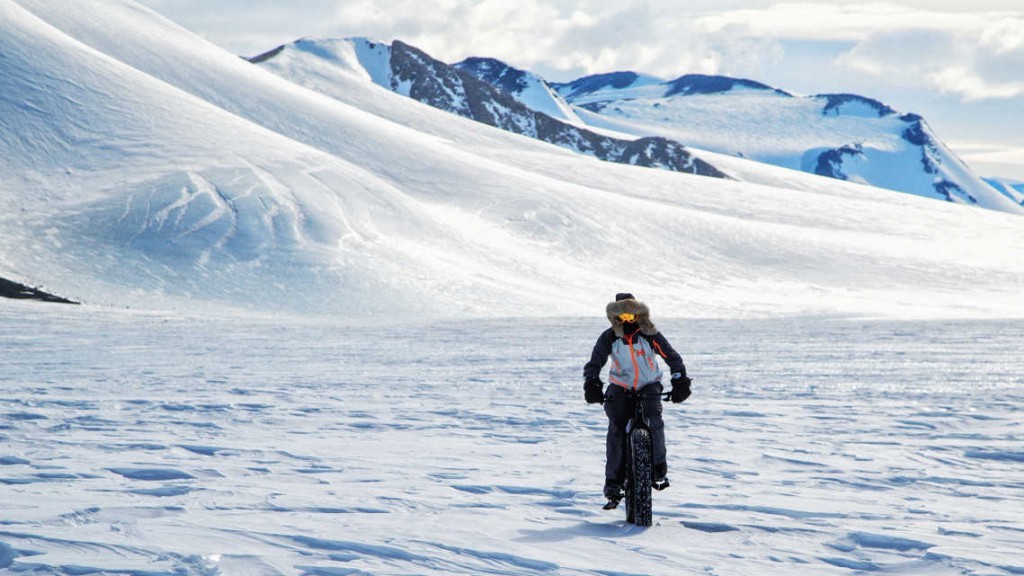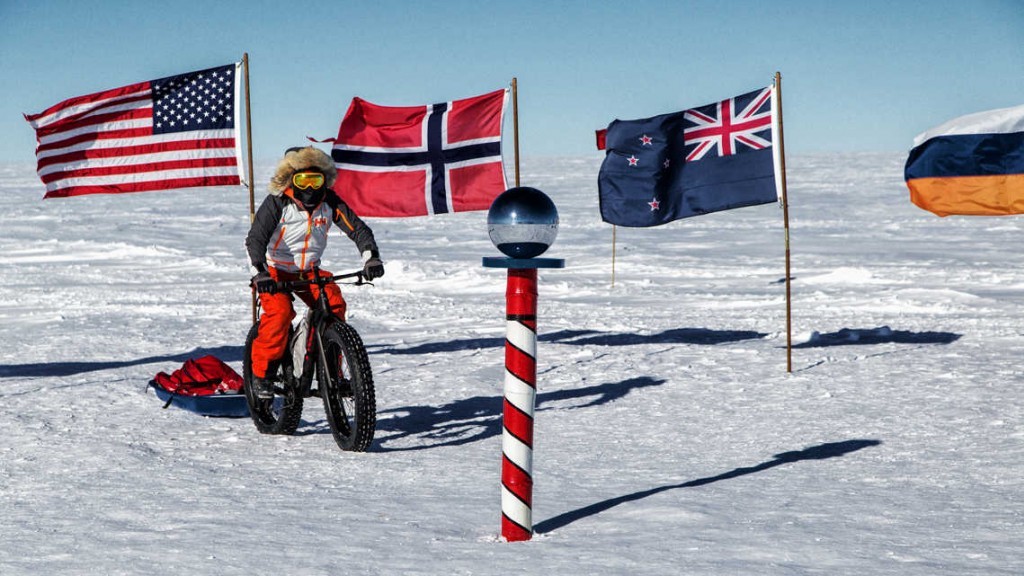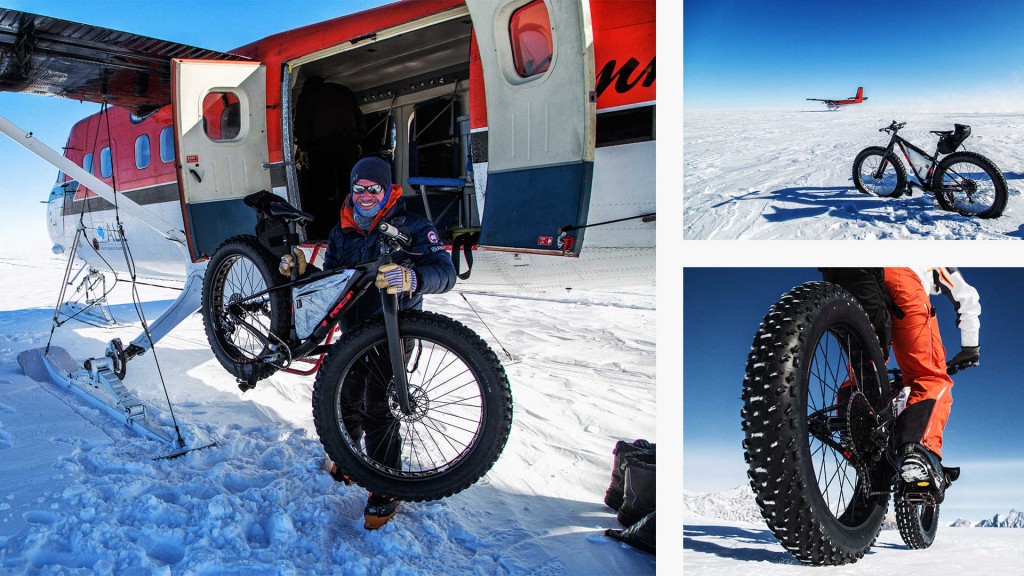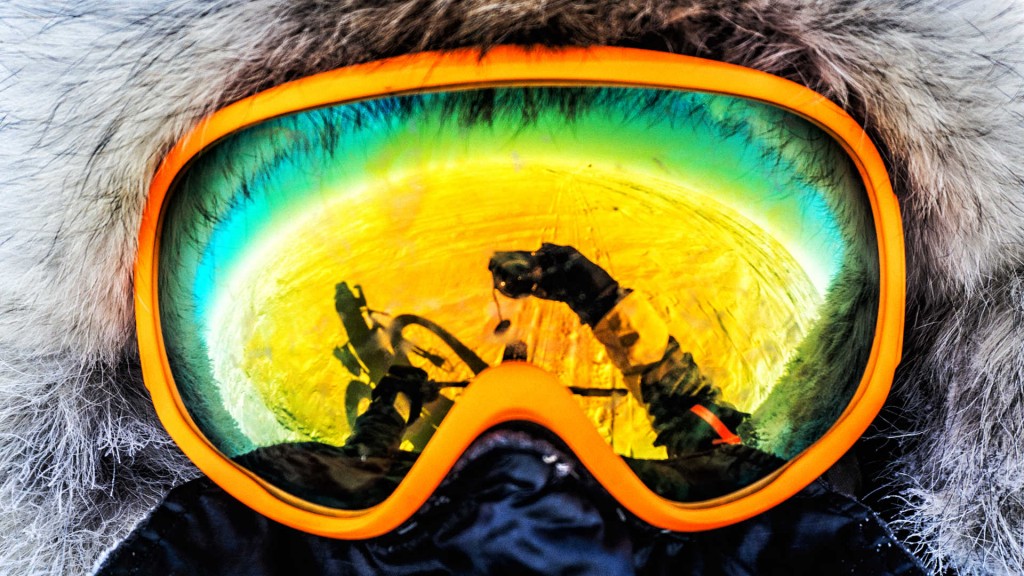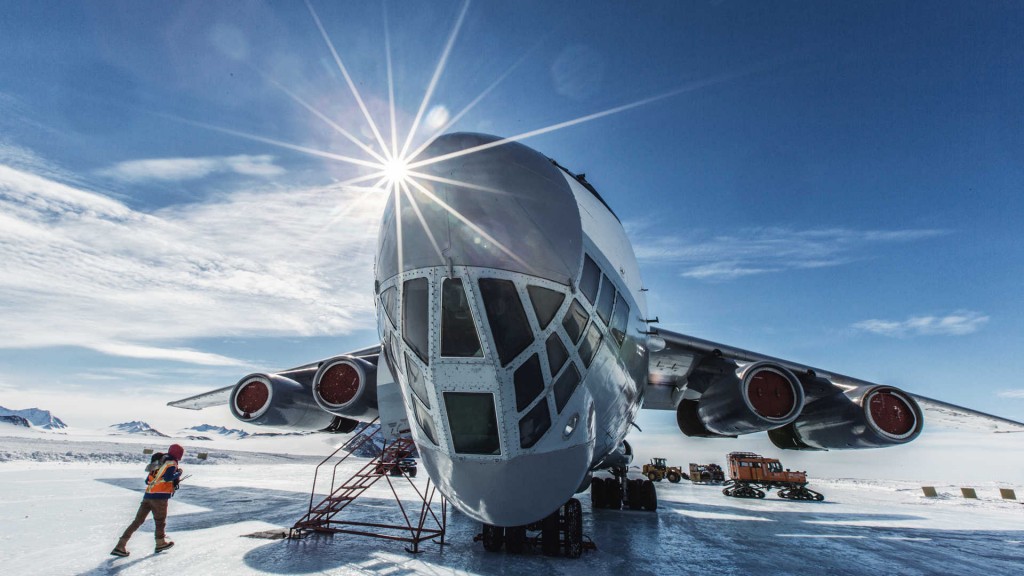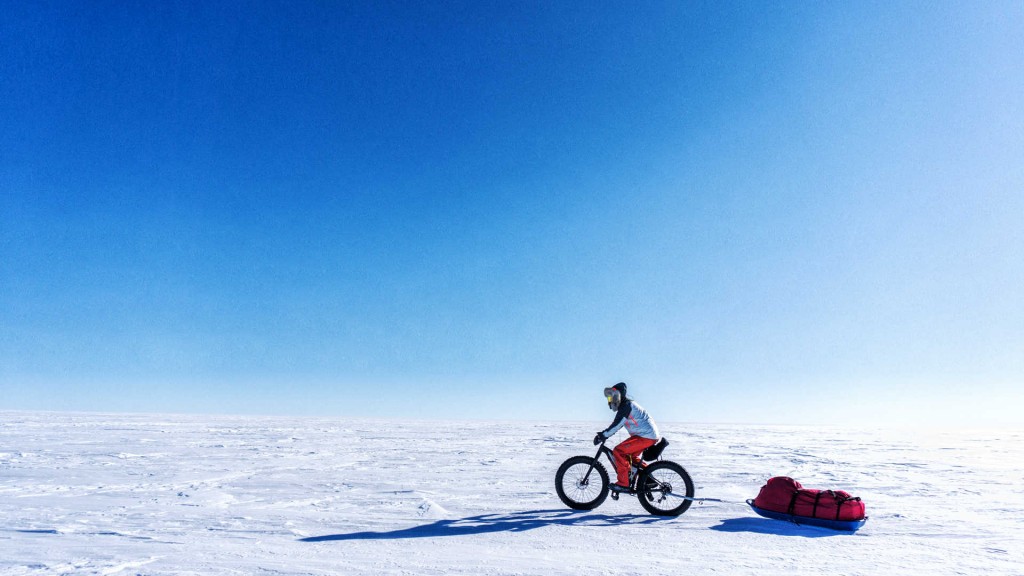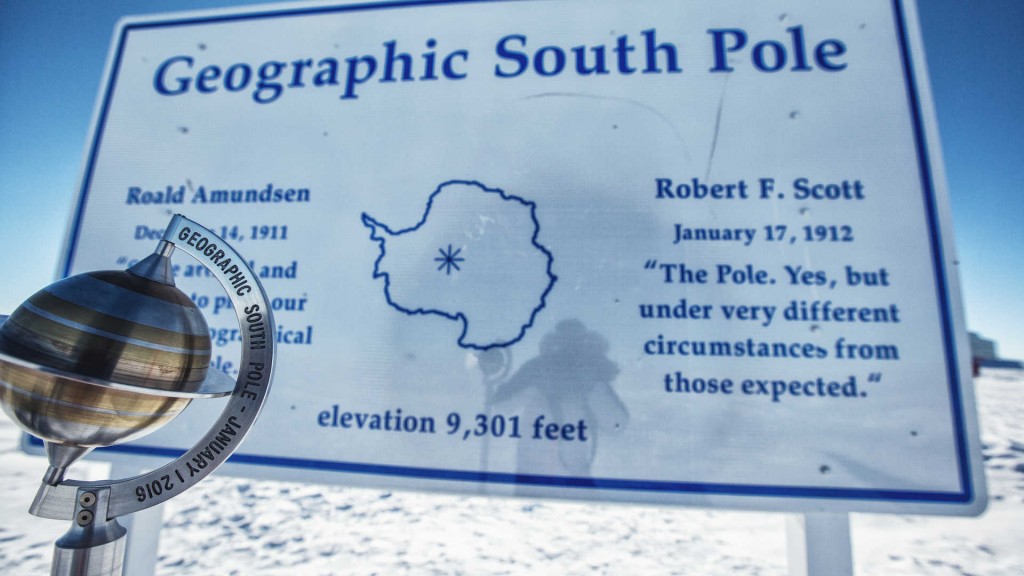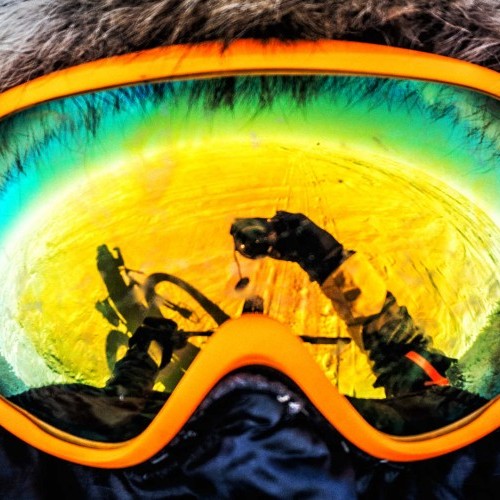
One Monotonous Ride: Trek To The Pole
Thu 10th Nov, 2016 @ 9:30 pm
Kick back with a brew and get stuck into this great piece from Trek, to the South Pole on a bike! It’s a tale of tremendous human endurance in some pretty harsh conditions, but also one of pushing the limits of technology in sub-zero temperatures over a testing landscape.
The Story of the First Trek to Reach the South Pole
Every company has its legends. Narratives are told throughout organizations and passed from executive to manager to employee until the moral is deeply ingrained. One of Trek’s favorites is the tale of the legendary Norwegian explorer Roald Amundsen, the first man to reach the South Pole. Amundsen’s success was largely credited to his meticulous planning, which included cycling 2,000 miles from Norway to Spain; studying Inuit tribes’ movements, clothing, and culture; and becoming an expert cross country skier. Amundsen’s forethought to mitigate potential problems—he brought four thermometers to cover for any accidents and marked supply depots on both sides of his path in case he got blown off course—is why he succeeded whereas his less-prepared polar adventure colleague Robert Scott perished attempting the same feat at roughly the same time.
The race to the South Pole is a well-told story within our walls, and so in November of 2015, when polar adventurer Eric Larsen came to us with the ambitious goal of riding a bike there, we were intrigued. Though our hardened winter-weary Wisconsin souls shook at the suggestion, the question of what bike to ride was easy to answer: Farley. But there were trickier questions at hand.
Could tire sealant withstand -30°F for a week at a time? How would brakes handle such extreme conditions? Whereas the North Pole is a rapidly melting floating sheet of ice, Antarctica is actually a continent with undulating terrain and elevation. It may be an endless landscape, but it’s not always consistent. With the lessons of Amundsen fresh in our minds, we loaded Eric up with everything we thought he might need. The rest was up to him. The following is taken from his first-hand account of the voyage.
Riding Day 1: Let’s Get Started
January 4, 2016, 21:43 CST
Our goal? The South Pole by bicycle! I am guiding for Antarctic Logistics and Expeditions. My client Yoshi and I couldn’t be more excited as it’s been a fairly busy week in Union Glacier testing and packing gear, as well as going on training rides. Everyone in camp was very jealous of my Trek Farley.
The flight from Union Glacier to here is nearly five hours with one refueling stop at a fuel depot called Thiels Corner. The last time I was there was in 2008 while I was guiding a group of four clients to the South Pole via the same route that Reinhold Messner pioneered. I remember the day vividly as one of our resupplies included a special treat—extra cookies and chips if I remember correctly. At that point, we were roughly half way through our 43-day expedition and still needed to make the long and arduous climb up to the polar plateau.
The plateau is at an elevation of roughly 8,500 feet but it feels more like 12,000 feet to your body because the Earth’s atmosphere is thinner at the North and South Poles. Coming from about 2,400 feet at Union Glacier, many people make the mistake of pushing hard right away. This can lead to altitude sickness and there have been several medevac flights already this year. Our plan is to have a relaxing night and morning, then hit the trail for six hours tomorrow.
I’m not going to lie, it is incredible to be here. We are completely surrounded by snow that extends toward the horizon in every direction. It is cold. -30°F, and the 10-knot wind knifes at any exposed skin. But this place is my home, and to succeed in Antarctica is not to conquer, but to cope.
Riding Day 2: This Is Antarctica
January 6, 2016 07:13 CST
89.1169S:80.0395W
Sunny and slight wind, -27°F
One of Antarctica’s dirty little secrets is that camping here is actually quite comfortable. Once you set up the tent, inside it is generally above freezing. Because it is so dry here, all the frost quickly melts off of my ruff and nose beak (that I sew onto my Zeal goggles).
Still, life here is no picnic and the vastness of this place is intimidating to say the least. It’s also very, very cold here, which adds a distinct severity to everything that you do. Getting a drink of water or adjusting base layers become monumental feats of survival in this environment. I’m not kidding. Lose a glove or a mitten and you can kiss your fingers goodbye.
Despite all that, I do feel lucky to be here. I love the starkness and the snow. Cycling hasn’t been as pleasurable, and we struggled—half-pushing, half-riding, and regularly getting bogged down in soft spots. Because it is so dry, the snow acts like sand paper against our sleds so that it feels like we’re towing an anchor behind us, which adds another level of difficulty to the whole mess.
It’s easy to get overwhelmed when facing these kinds of odds and I had to talk Yoshi off the cliff at the end of the day. Exhausted, uncertain, and ready to give in, he was emotional.
“Never make a decision at the end of the day,” I advised him. “You will be surprised how much a warm meal and a good night sleep can improve your perspective.”
And so now I am snuggled up in my Therm-A-Rest sleeping bag covering my eyes against the 24-hour daylight hoping that the morning will bring a new perspective and another warm tent at the end of the day!
Distance traveled: 7.5 nautical miles.
Riding Day 3: On Time
January 7, 2016 07:14 CST
89.1169S:80.0395W
Sunny and slight wind, -30°F
I have a reoccurring nightmare prior to starting any expedition that has to do with one basic thing: time. While there are a variety of dangers that we face on any given adventure, the mental aspects of dealing with such great spans of time and space can be overwhelming.
To be standing on the short end of a nearly two-month expedition is brutal. To focus on one thing (skiing, climbing, etc.) day in and day out for weeks and months can be heartbreaking. Especially when you contrast that with the pace of the rest of the world. Here, we have no other distractions, no outside entertainment. It doesn’t take too many days to come face to face with yourself and for some it can be a scary moment. I’ve always said the best way to determine what is important is to remove everything else from your life.
In Antarctica, time is rarely your friend. We have a certain number of days to cover a certain distance. For our Last Degree bike expedition, we have eight days of food to sustain us for 68 miles.
Cycling here is very, very hard. At any given moment we waiver between exhaustion and tolerance. After two days, I can honestly say that I have come to terms with time. This is not the first time I have felt these feelings and it surely won’t be the last.
Riding Day 4: Halfway!
January 8, 2016 07:13 CST
89.4898S:78.3267W
Sunny and slightly warmer, -20°F
In Antarctica, it takes about two hours from the moment I wake up until we have packed everything up to start moving South. In that time, I am alternating between melting snow with my MSR stove, getting dressed, eating breakfast, going to the bathroom, making soup, and more. It’s anything but relaxing. Once on the trail, it takes me an hour or so to warm up stiff and sore muscles.
We got lucky again with the weather—clear and calm. Additionally, a couple of ALE guides drove out on a snowmobile from the South Pole so that the snow is slightly compacted and we are actually able to ride substantially more. So much in fact that we covered 12.3 nautical miles in seven and a half hours of travel (ten hours including breaks).
As far as my setup goes, I couldn’t be more pleased with the performance of my Trek Farley 9.8. In conditions like these, weight is everything. I opted to pull nearly all my gear in my sled, which keeps my bike weight low. I am using a Thule arm from one of their chariot child carriers. In this system, it is impossible for the sled to overtake the back wheel.
The terrain has been undulating, so that we find ourselves going up long snowy inclines for nearly two hours. Then down. Today, I stopped and looked around and thought, “It feels like we’re on top of a round cake.” We were in the middle of a perfect circle of white.
Riding Day 5: Our Luck Continues
January 9, 2016 07:17 CST
89.6523S:74.597W
Sunny, -25°F
If there’s one thing I’ve learned about Antarctica over the years, it is that the only constant is change. I’ve completed two full (nearly two-month-long) expeditions to the South Pole and two partial expeditions. This is my fifth season in Antarctica, and I’ve never experienced such a long period of clear skies. The weather and visibility have been outstanding for the past four days. I worry that it’s only a matter of time before the conditions devolve into a whiteout or worse.
We have also created some of our own luck. Our short expedition is not a race or world record attempt, so we take assistance in any shape or form to increase our chance of success—whether it be a resupply so our sleds aren’t as heavy or, more importantly now, following a snowmobile trail to the South Pole. For anyone who has spent any amount of time on a fat bike, you know that snow conditions greatly affect performance. The majority of the snow in Antarctica is hard and wind packed but there are also soft pockets that bog us down. The snow machine track compacts the snow just enough to make pedaling exponentially more efficient and reliable.
Riding is still an effort here. We have been out here for five days, but our bodies are not fully acclimatized yet. But navigation is much easier now. Rather than using my compass to get a bearing and then aim toward a distinctive snow drift on the horizon, I simply follow the trail ahead as it snakes endlessly south. I worry that if the wind picks up, the trail would be completely obliterated but like most of my fears out here, I try not to think about it too much.
Slowly, we whittle through the day. One hour of riding interspersed with walking then a seven-minute break for snacks and a drink. Then another hour. And so on. And so on. At some point near the end of the day I am simply “riding to be done,” and all I can think about is getting into the tent and going to sleep. I am tired.
Riding Day 6: the Fix-it Shop
January 10, 2016 10:27 CST
89.897S:72.668W
Sunny, -25°F
One of my son’s favorite books is a Sesame Street story called “The Fix-it Shop,” where Elmo and Bert team up to fix other monsters’ toys. On an expedition, I feel like the tent often becomes a fix-it shop as well. In an environment this cold combined with intense UV light, it’s just a matter of time before something breaks.
Yesterday, it was my boots. I am using a pair of Norwegian ski boots that I’ve used on various expeditions over the years. They are light and warm and have a stiff enough sole for cycling. Last year during my polar training course, I had to Shoe Goo the heel on. When I grabbed the boots, I had completely forgotten about my previous repair. Yesterday, at the end of the day, the heel of my boot was flopping in the snow. I knew it wouldn’t take much for the whole sole to come off.
I carry a fairly comprehensive repair kit that varies in size depending on the expedition. For the bike trip, I have a small assortment of bike tools as well as a few other items. The rubber was way too thick for a needle, so rather than sewing I drilled through the entire heel of the boot and then used one of my bolts and locking nuts. It’s a bit of a “Frankenstein Boot,” but it survived the day in top form.
It was another sunny and cold day on the polar plateau. The scenery changes very little here but it is still beautiful. It’s like we are traveling between two perfect circles—the white underneath and the blue above.
Yoshi was surprised when I described the South Pole Amundsen-Scott station to him. “It’s like a small city,” I said.
“Really?” he replied. “I thought all there was was just a striped pole.”
A few hours into our day, I looked south toward the horizon and saw a few small black dots and a white round blob: the South Pole station, only 14 miles away.
I stopped and told Yoshi, and he cried with relief at finally being so close. Just the day before, I had coaxed him into continuing after a particularly hard morning. I was proud of his effort and equally relieved to have the Pole in our sights. “Eric,” Yoshi replied. “I can’t see anything without my glasses.”
Distance traveled: 11.9 nautical miles
Riding Day 7: 90 Degrees South!
January 11, 2016 07:14 CST
90.0000S:49.491W
Sunny, -35°F
“Today,” I proclaimed to Yoshi, “we will stand at the bottom of the world.” We shared in the momentary excitement of this thought.
But our enthusiasm for the day waned as we straddled our bikes and began our coldest day pedaling into a stiff headwind. I was tired and ready to be done. I could tell Yoshi was tired too.
I had asked him to lead the first shift of the day and found that the mental effect of being out front boosted his energy level enough to increase our hourly mileage slightly. After an hour, I took over the lead, head down to protect my face from frost bite, and watched as the Amundsen-Scott South Pole station grew larger on our horizon.
At last, we rolled into camp. ALE’s representative at the South Pole, Rob Smith, greeted us with a warm smile as he ushered us into the heated tent. The actual South Pole was still a half mile away, but we were tired and hungry. And there was heat to be had.
Sitting in the heated ALE base camp tent drinking a beer, the struggle, stress, and strain of the past week melted away just as quickly as the icicles stuck to my balaclava and neck gaiter. I inched closer to the small stove trying to suck in all of its heat.
An hour later, we donned our polar gear again and rode the last few hundred yards to the South Pole. Standing there, all we’d endured was suddenly, deeply worth it. I got the sense Yoshi felt the same. We had done it.
I took a few pictures of Yoshi in front of the South Pole. When the chill settled in, he rode back to our camp while I lingered at the Pole, taking a few self-timer photos with my Farley. I had just guided the first ever Last Degree South Pole Fat Bike Expedition. It was an incredible feeling.
Find out more at Trek Bikes.


